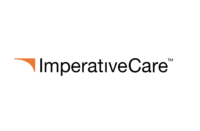IRVINE, Calif., April 24, 2017 (GLOBE NEWSWIRE) — MRI Interventions, Inc. (OTCQB:MRIC) today announced that the reduced patient risk associated with a One-Room, One-Procedure workflow for laser ablation has been reviewed in the journal of the American Society for Healthcare Risk Management (AHRM) April issue. The findings indicate a one room solution reduces infection and other patient risks due to transport.
In the paper titled Neurosurgical laser ablation and MR thermometry: Risks of multisite workflow pattern (Volume 36, Issue 4 2017 pgs. 7-18), neurosurgeons and infection control specialists discuss the patient safety issues associated with multi-site workflows for neurosurgical laser ablation procedures. The emergence of neurosurgical laser ablation is providing a minimally invasive alternative to conventional open craniotomy for many patients suffering from brain tumors, uncontrolled seizures, and post radiation necrosis. These procedures are frequently performed using a multi-site workflow pattern involving transport of the patient between the operating room, the computed tomography suite, and the magnetic resonance imaging (MRI) suite. The paper concludes that the use of technology that allows patients to remain in one room from induction of anesthesia to completion of the ablation eliminates these risks (of multi-room transport), while also providing the opportunity for real-time MRI-guided visualization during the minimally invasive procedure. The ClearPoint Neuro Navigation System enables these procedures to be performed with real-time MRI visualization from start to finish in a diagnostic MRI or specialty intraoperative suite.
“Although this article was specific to laser ablation, it further builds upon the more than 10-year experience with low infection rates in other neurosurgical procedures performed in a diagnostic MRI” (Deep Brain Stimulator Implantation in a Diagnostic MRI Suite: Infection History over a 10-year period, Journal of Neurosurgery, March 2016), said Dr. Paul S. Larson, Professor and Vice Chair Clinical Neurosurgery, UCSF Medical Center and co-author of the article.
The ClearPoint system allows surgeons to plan, target, and adjust trajectories under real time MRI-guided visualization for placement of electrodes, catheters and biopsy needles. The entire procedure takes place in an MRI suite and eliminates the need to transport patients between different surgical settings during the procedure. Real time MRI imaging provides the surgeon with current views of the patient’s brain anatomy at the time of surgical planning, device alignment, and navigation of the device to target, resulting in improved accuracy and reduced risk of brain shift associated with standard operating techniques.
About MRI Interventions, Inc.
Building on the imaging power of MRI, MRI Interventions is creating innovative platforms for performing the next generation of minimally invasive surgical procedures in the brain. The ClearPoint Neuro Navigation System, which has received 510(k) clearance and is CE marked, utilizes a hospital’s existing diagnostic or intraoperative MRI suite to enable a range of minimally invasive procedures in the brain. For more information, please visit www.mriinterventions.com.
Forward-Looking Statements
Statements herein concerning MRI Interventions, Inc. (the “Company”) plans, growth and strategies may include forward-looking statements within the context of the federal securities laws. Statements regarding the Company’s future events, developments and future performance, as well as management’s expectations, beliefs, plans, estimates or projections relating to the future, are forward-looking statements within the meaning of these laws. Uncertainties and risks may cause the Company’s actual results to differ materially from those expressed in or implied by forward-looking statements. Particular uncertainties and risks include those relating to: the Company’s ability to obtain additional financing; estimates regarding the sufficiency of the Company’s cash resources; future revenues from sales of the Company’s ClearPoint Neuro Navigation System products; and the Company’s ability to market, commercialize and achieve broader market acceptance for the Company’s ClearPoint Neuro Navigation System products. More detailed information on these and additional factors that could affect the Company’s actual results are described in the “Risk Factors” section of the Company’s Annual Report on Form 10-K for the year ended December 31, 2016, which has been filed with the Securities and Exchange Commission.
Source: BioSpace






